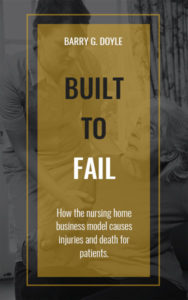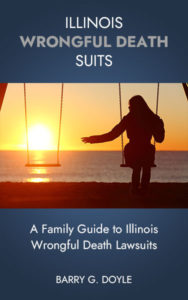The Illinois Department of Health has cited and fined HealthBridge of Arlington Heights when a Certified Nursing Assistant failed to use a required safety belt during a bathroom transfer, causing a 69-year-old resident to fall and injure her ankle. The resident ultimately required surgery to repair two fractures, which went undiagnosed for over a week despite her complaints of pain and inability to walk during physical therapy.
The resident in question, who had been admitted with cellulitis of both lower legs, unsteadiness, gait abnormalities, reduced mobility, and morbid obesity, required assistance with transfers and was supposed to have a safety belt used during all mobility assistance.
The incident occurred when the nursing assistant brought the resident into the bathroom to transfer her to the toilet. According to the CNA’s account, “he instructed the resident to hold the grab bar and stand” but “as the resident stood up, she lost her balance and started to fall.” The assistant stated that “he tried to place the wheelchair under her before she fell but was unable to.” When the resident fell, “her right knee hit the floor, but she was still holding onto the grab bar and standing on her left leg.”
The nursing assistant then “guided her to a sitting position on the floor” and had to reposition her leg because “when she was in the sitting position on the floor, her left leg was extended in front of her, and her right leg was under her weight, so he moved her right leg from under her and placed it in front of her.” The assistant had to call for help to get the resident off the bathroom floor.
A critical safety violation emerged during the investigation when the nursing assistant initially admitted that “he did not have a gait belt on the resident when the fall occurred because he did not have one.” However, when another staff member arrived to help, “one was put on her when the staff member came to help get her up off of the floor.” The facility’s policy clearly required that “Staff will use a gait/transfer belt on residents who need limited to total assistance with transfer or walking.”
The Director of Nursing confirmed that “the resident was a one person assist with a gait belt for transfers” and emphasized that “staff should always use a gait belt for the resident’s safety.” This made the nursing assistant’s failure to use the required safety equipment a clear violation of established protocols designed to prevent exactly this type of injury.
When questioned again by supervisors, the nursing assistant changed his story, stating “I do believe I did have a gait belt on before the fall.” However, when confronted with testimony from the staff member who helped lift the resident, who confirmed “they applied a gait belt and lifted her up off the floor and into her wheelchair,” the assistant admitted “To be honest, I don’t remember the scenario whatsoever. I do not remember exactly when the gait belt was put on.”
The resident’s husband discovered her on the bathroom floor when he visited, stating that “he came in and the resident was sitting on the bathroom floor and had fallen.” He observed that “a couple days later, the resident’s right leg was bruised, and her foot was pointed in an abnormal position.”
Despite the resident’s immediate complaints of pain and the inityial signs of injury, the fracture went undiagnosed for over a week. The facility’s own investigation noted that “no localized symptoms or signs of ankle injury were evident immediately following the assisted fall or in the days afterward.” However, this contradicted the resident’s continued pain complaints and her husband’s observations of bruising and abnormal positioning.
The severity of the injury only became apparent when the resident “was in too much pain to ambulate with PT (Physical Therapy)” more than a week after the fall. X-rays finally revealed “an acute fracture of the distal fibula and of the medial malleolus with subluxation of the tibia on the talus medially” along with “soft tissue swelling diffusely.” This meant the resident had broken her ankle in two separate places and the bones had shifted out of their normal position.
The orthopedic surgeon who evaluated the resident documented a “Right ankle bimalleolar fracture subluxation” and determined that surgery was necessary to repair the damage. The resident required “ORIF (Open Reduction Internal Fixation) right ankle” surgery to properly align and stabilize the broken bones.
The facility’s own investigation acknowledged that “the subsequent right ankle fracture confirmed may reflect an initially minor or hairline fracture caused by the assisted fall.” They noted that several factors may have contributed to the delayed diagnosis, including “The resident’s high pain threshold and non-localized chronic lower extremity pain masking early injury” and that “Morbid obesity contributes to mechanical stress and potential progression of injury.”
However, the facility’s explanation did not address the fundamental safety violation that caused the fall in the first place – the failure to use the required gait belt during transfer. The Director of Nursing admitted that “it is likely that the resident received a small fracture during her fall but it worsened due to participation with therapy,” suggesting that proper initial assessment and treatment might have prevented the need for surgery.
This incident represents a failure in basic safety protocols that are specifically designed to prevent falls during transfers. The resident suffered significant injury and required major surgery that could have been prevented if staff had followed the facility’s own safety policies requiring the use of gait belts for residents needing transfer assistance.
One of our core beliefs is that nursing homes are built to fail due to the business model they follow and that unnecessary accidental injuries and wrongful deaths of nursing home residents are the inevitable result. Our experienced Chicago nursing home lawyers are ready to help you understand what happened, why, and what your rights are. Contact us to get the help you need.


